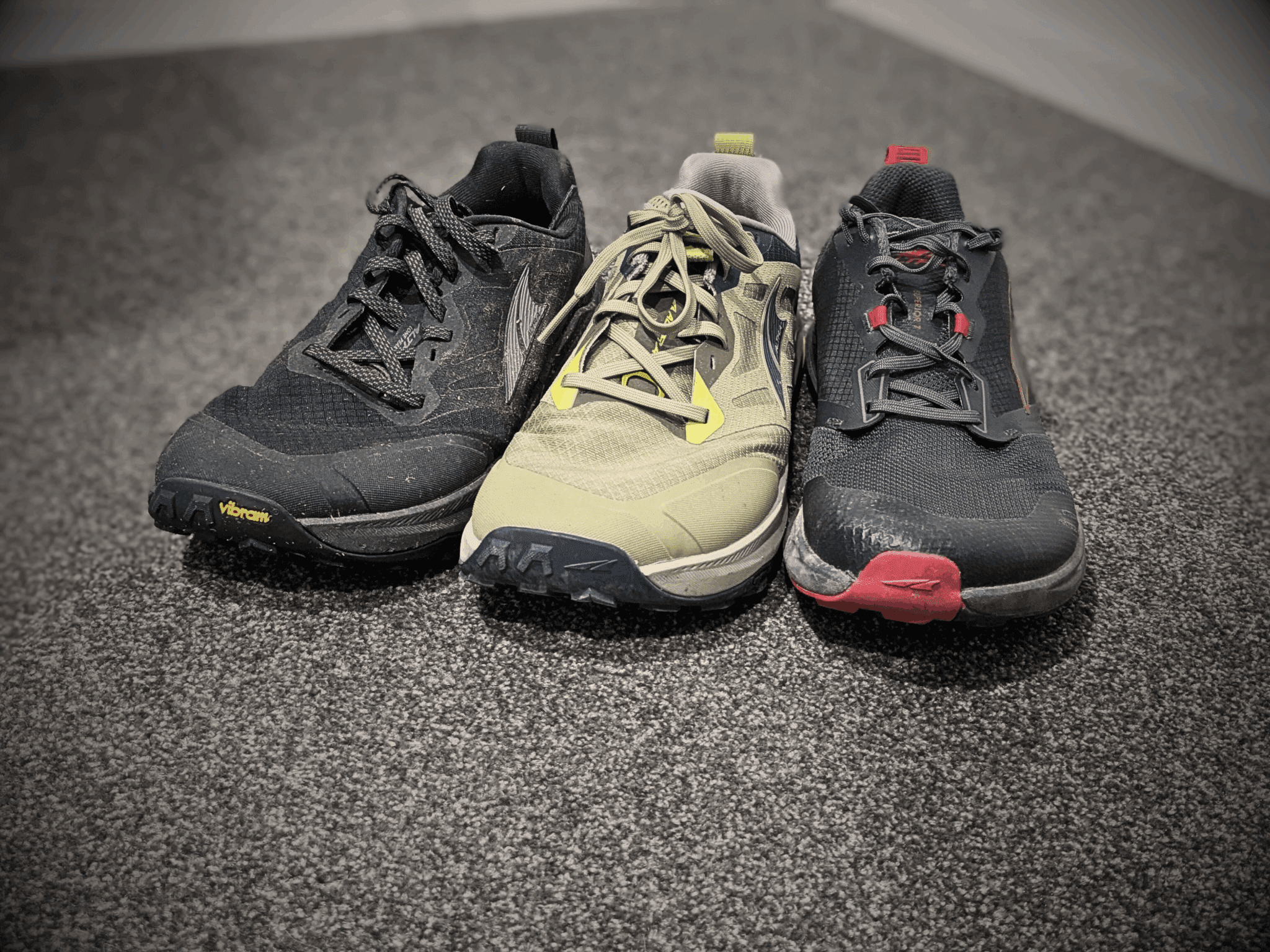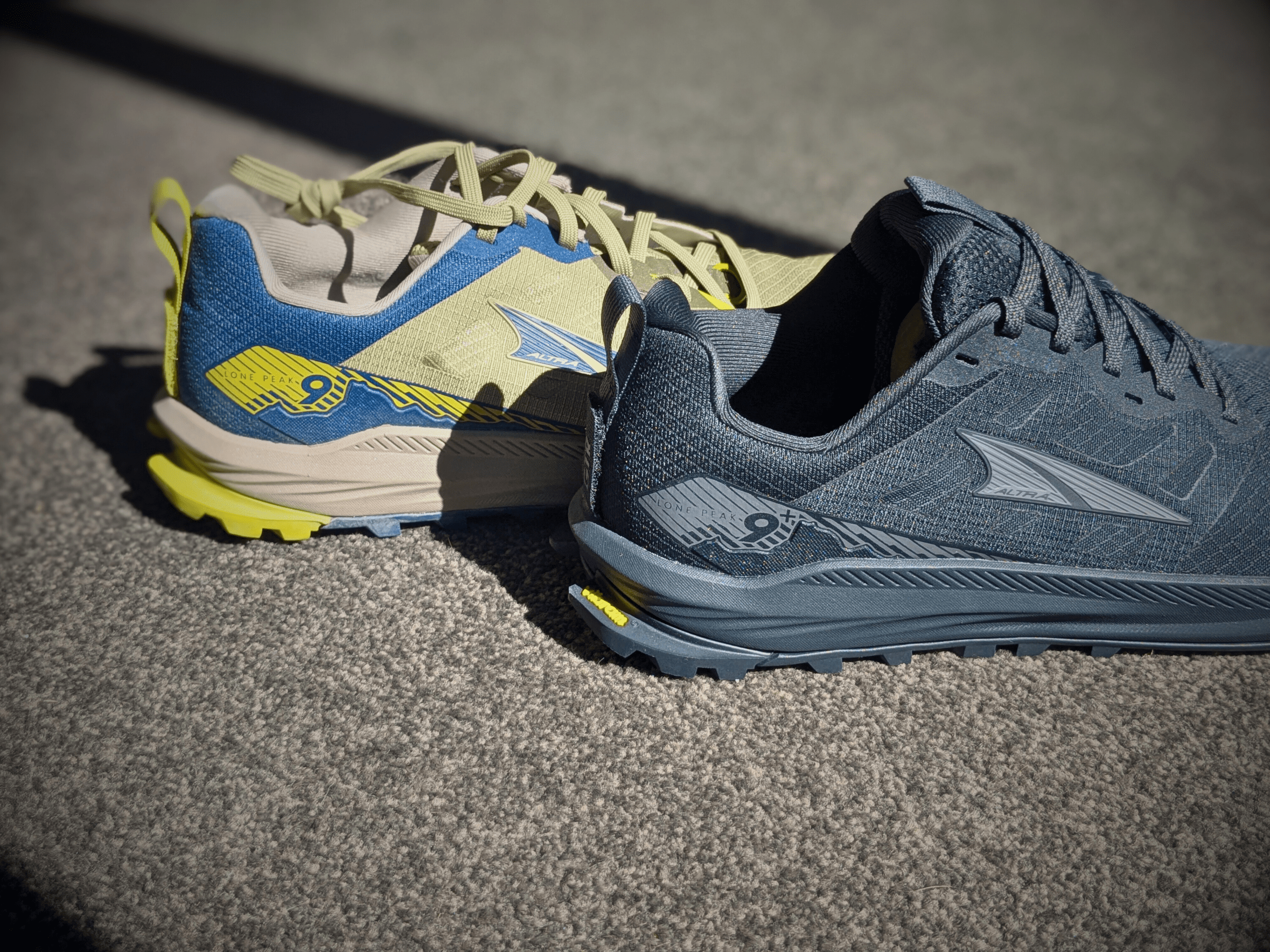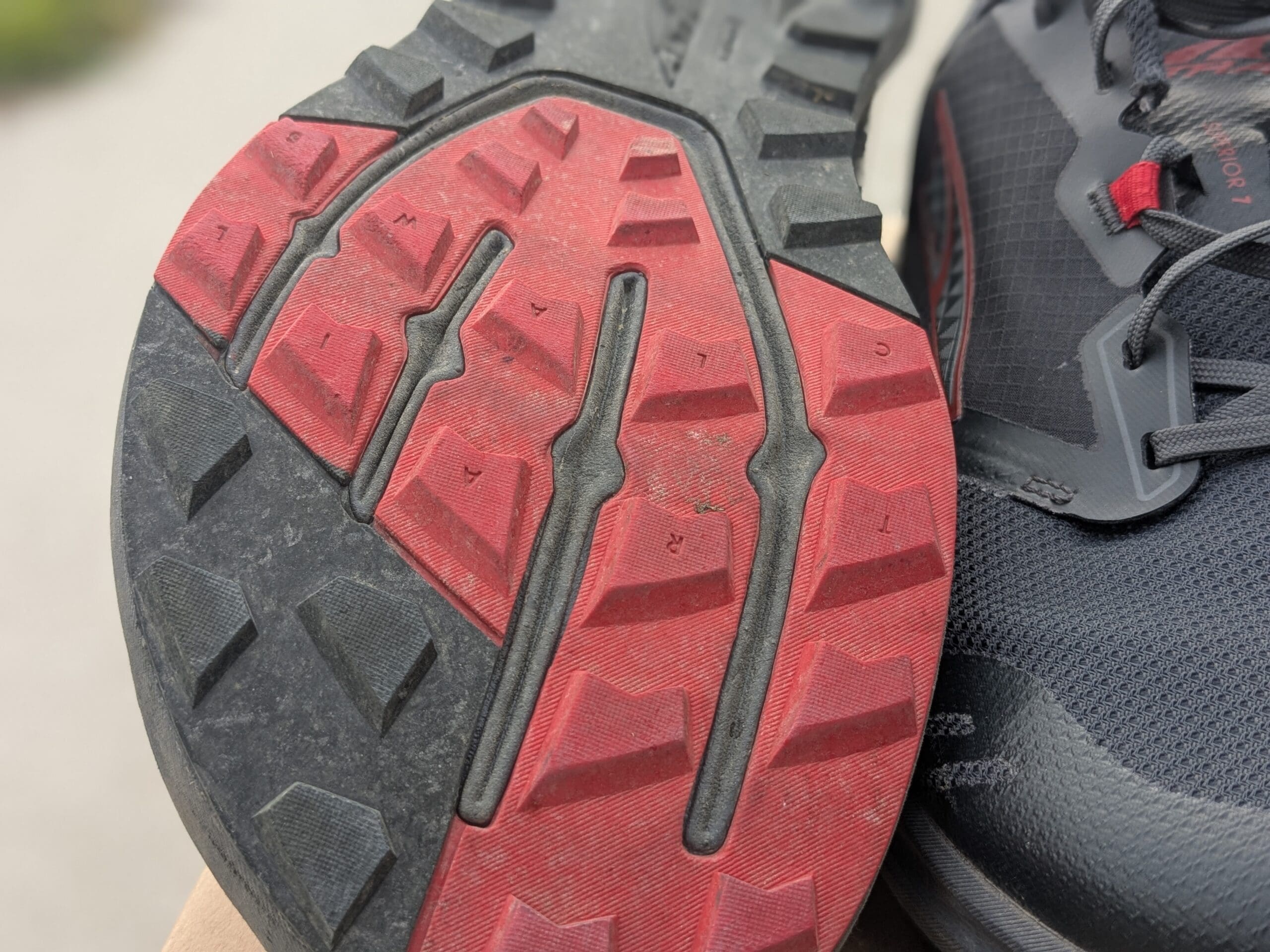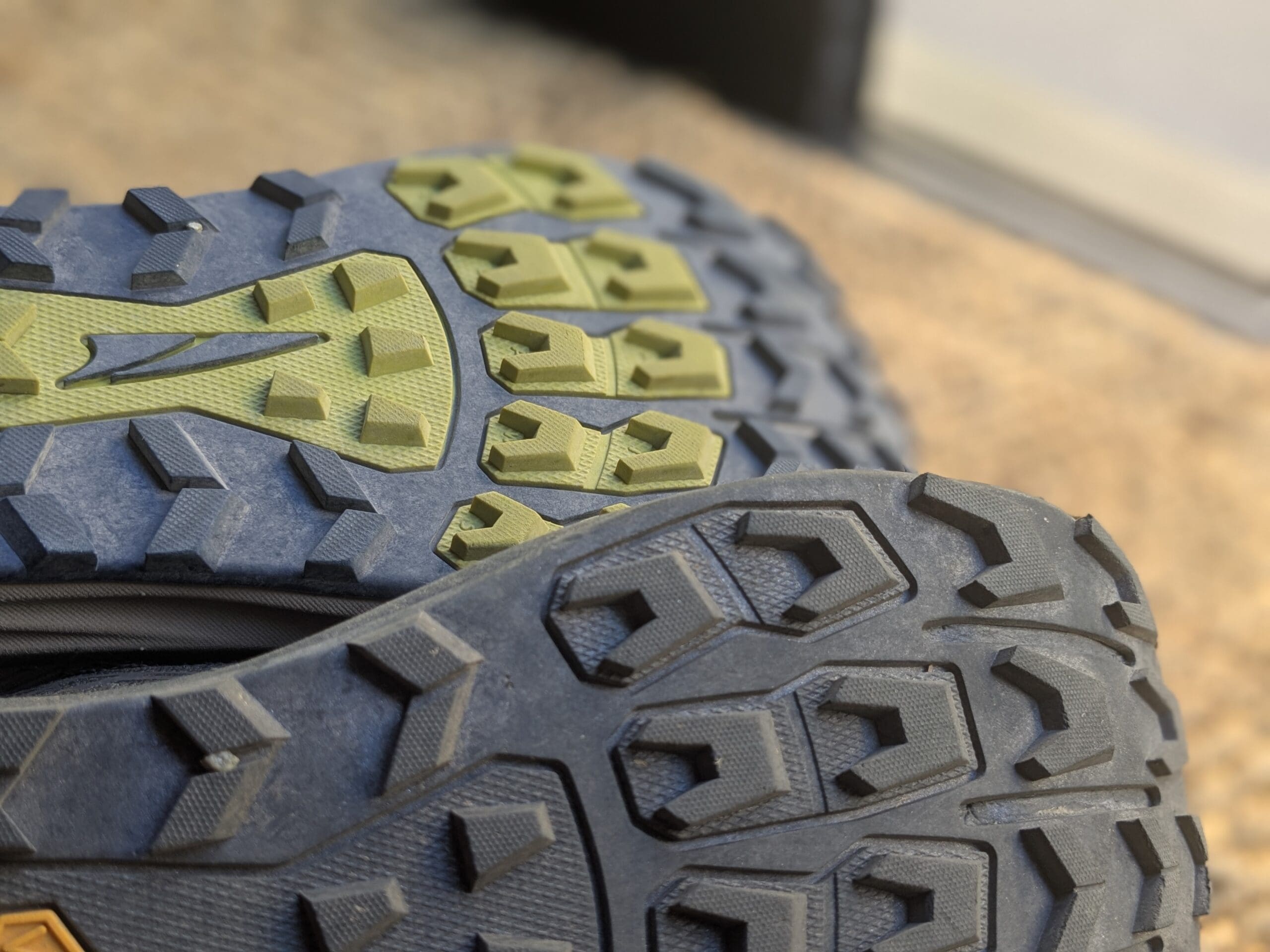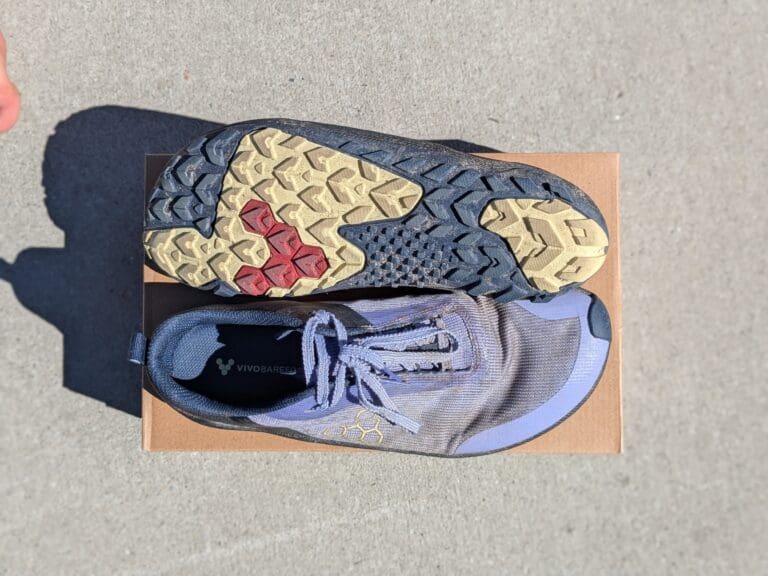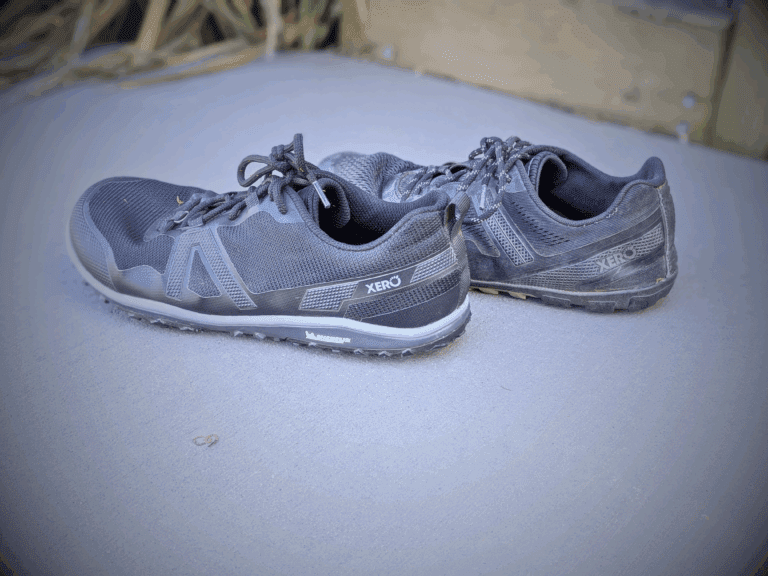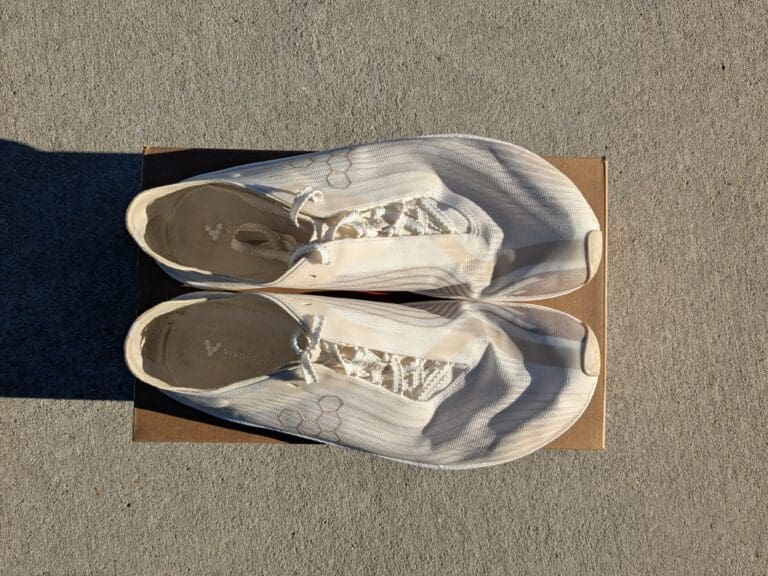The Altra Superior 7 and the Altra Lone Peak 9/9+ look similar to the eye.
Both are moderately cushioned, both are semi-aggressive, and both are sporting the Altra footshape.
So, how do you choose between the two? I’ll tell you how ->
Affiliate Disclosure: By clicking through the links on this page and purchasing the products, you’ll be helping me out. This is done because I receive a kickback from the sellers at no extra cost to you! Thank you so much for supporting us!
Lone Peak 9/9+
Type: Trail
Width: Wide
Stack height: 25mm
Weight: 10.58 oz/ 300g
A classic Altra trail shoe with a relaxed fit for long, comfortable miles. Read the Full Lone Peak 9 Review or Read the Full Lone Peak 9+ Review
Superior 7
Type: Trail
Width: Mid Wide
Stack height: 21mm
Weight: 8.1 oz/ 230g
The Altra Trail shoe that will put you in touch with the ground. Read the Full Review
A Brief Comparison
Both are foot-shaped trail slayers, but they diverge in philosophy. While the FootShape design of the Superior and Lone Peak differ a little (more on that later), they both feature a foot-shaped platform. However, the Superior leans toward minimalism and agility, while the Lone Peak is a workhorse built for long-distance comfort and versatility.
Knowing which fits your style comes down to nuance. Think of the Superior 7 as your lightweight, nimble option for technical or fast trails. The Lone Peak 9 and 9+ are a touch plusher, made to support those long days running or hiking, but with a slight loss in ground feel and agility.
What do you want to know?
Common questions:
The toe box on both shoes reflects Altra’s trademark roominess, but notable differences exist. The Superior 7 stays true to Altra’s ethos, offering ample space for natural toe splay, but it’s slightly less voluminous than the Lone Peak 9 and especially the 9+. I’ve measured side-by-side: the Lone Peak 9+ delivers more little toe room due to a more shallow taper, a game-changer for wide-footers or anyone prone to swelling on ultra days.
Which Altra Shoe is for you?
Take a quick 4-question quiz to identify the perfect Altra running shoe for your feet! You'll get both road and trail options based on your answers!
The midfoot fit is more secure in the Superior 7. The Superior has always been a shallow shoe, and the Lone Peak a deep shoe, and that’s no different now.. The 7 hugs the midfoot noticeably more, cutting down on that midfoot float that can get dicey in technical terrain. The Lone Peak, particularly in version 9+, adopts a more accommodating depth, but the width has a similar fit, which allows for thicker socks and swelling but trades away some lockdown.
Heel security is a strong suit for the Superior, while the Lone Peak can feel insecure. The Superior’s heel pocket is snug without being constrictive. Heel cup is minimal, and the padding strikes a balance: enough for comfort but not overbuilt. The Lone Peak feels a touch higher around the collar, with slightly more volume in general, but it occasionally gives way to slight lift on steep climbs. It’s not a deal-breaker, but worth noting for those prone to blisters and small heels.
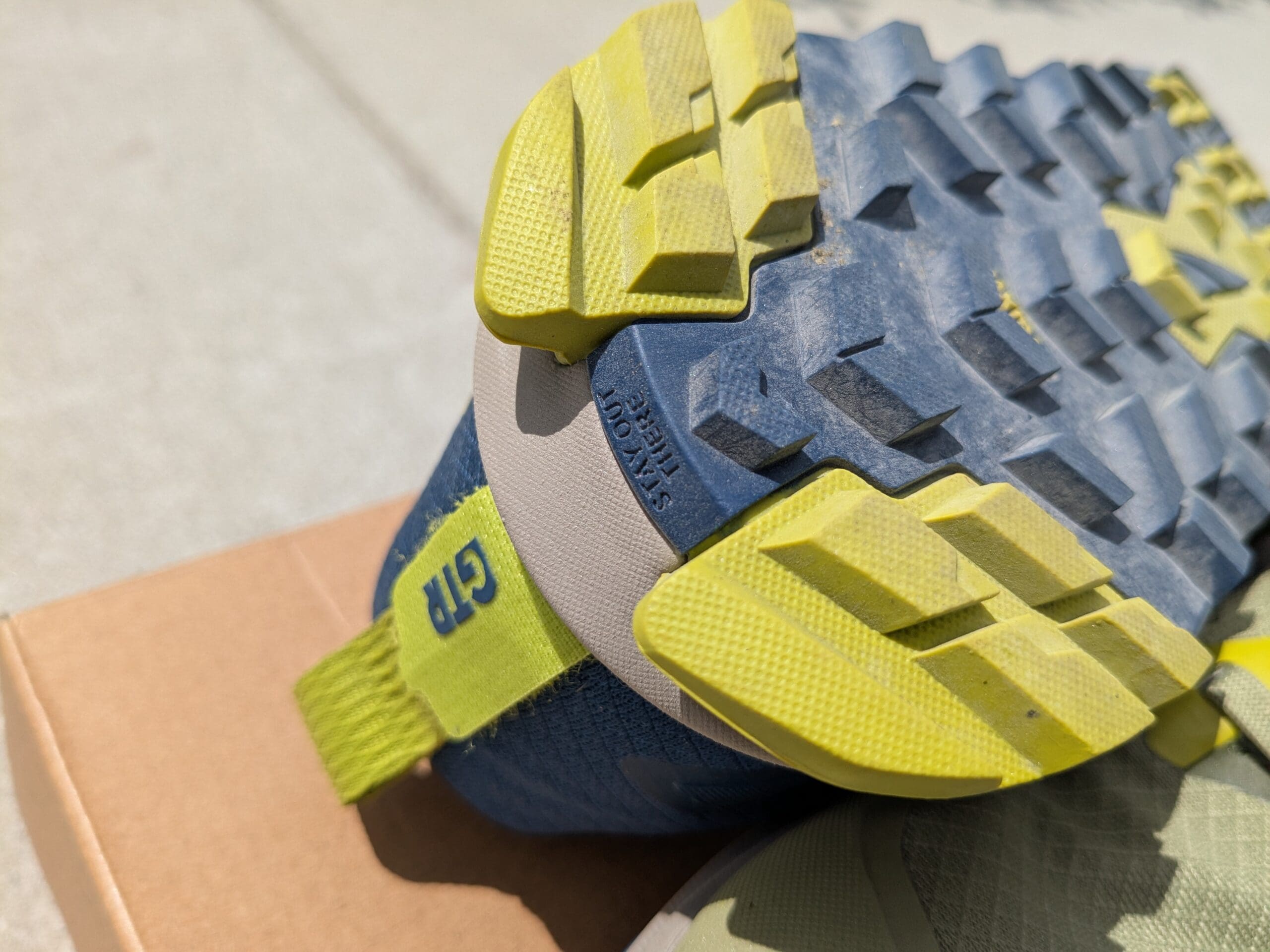
Sizing is true for most, but half-size variation is worth considering. In both models, my standard size fits well with thin trail socks. However, if you’re looking for room for thick, warm socks, it’s best that you half-size up in the Superior.
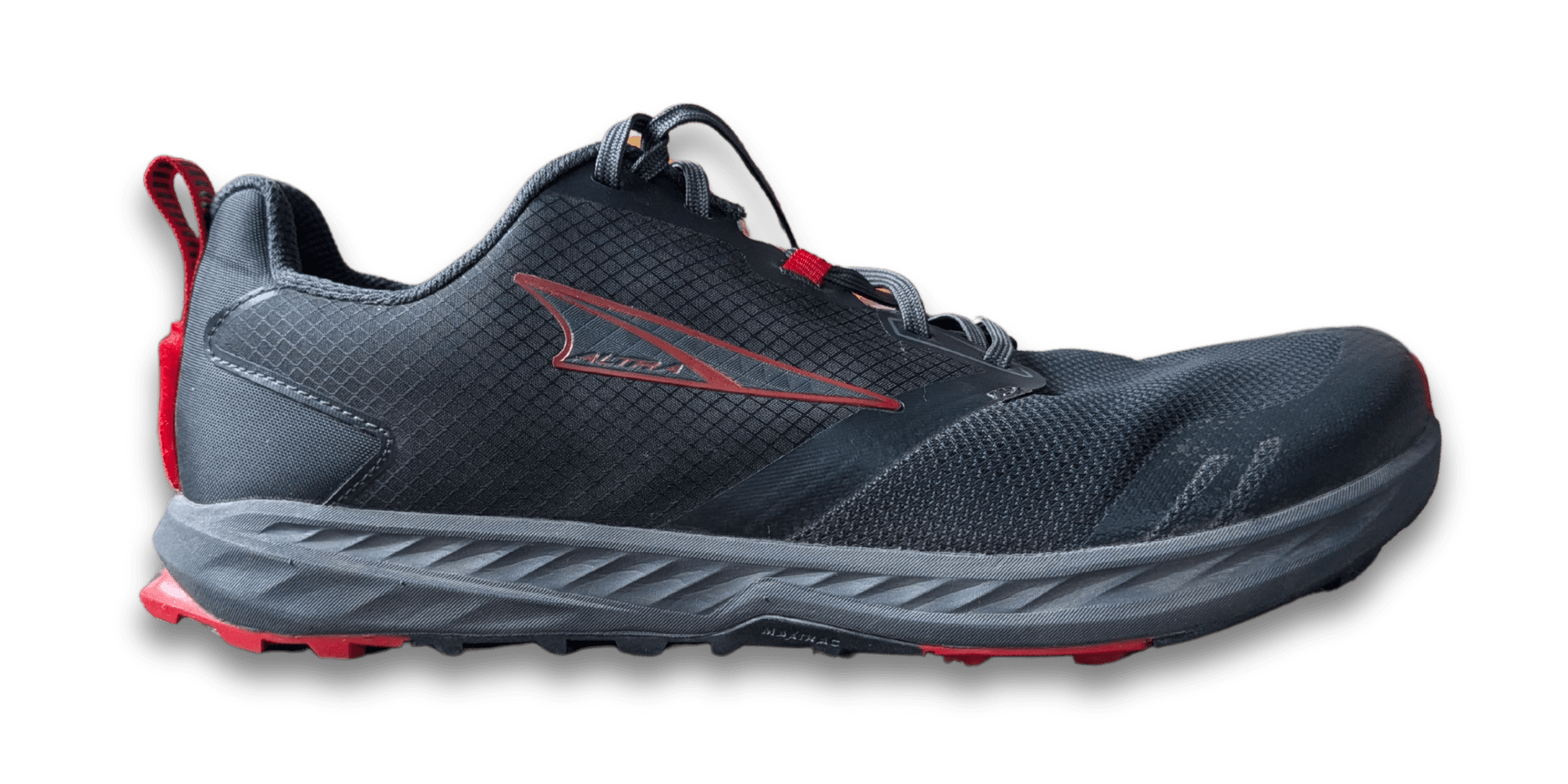
Altra Superior 7
The Superior 7 upper is stripped-down and lean, prioritizing weight savings. The mesh feels durable yet unobtrusive, with minimal overlays that keep the shoe feeling featherweight and highly breathable. The drainage held up after several creek crossings and dusty miles, and dry-out time was impressive.
The Lone Peak 9/9+ touts a more structured upper with reinforced overlays. The extra material adds durability for bushwhacking or toe-bashing descents, but also edges toward protection and slight stiffness, especially compared to the Superior.

Toe protection favors the Lone Peak, but not by a wide margin. A substantial toe cap up front on the Lone Peak provides a reassuring bumper on rocky trails. The Superior’s coverage is lighter, but the outsole design does angle up just enough to safeguard against occasional root strikes.
Lacing and tongue structure differ, impacting overall lockdown. The Superior 7 features a thin, gusseted tongue that stays in place and cuts down on debris. Lone Peak 9/9+ goes with a traditional, padded tongue, which doesn’t slip but can feel a tad bulkier on hot days. Laces on both models hold well; I haven’t had to stop mid-run to readjust.
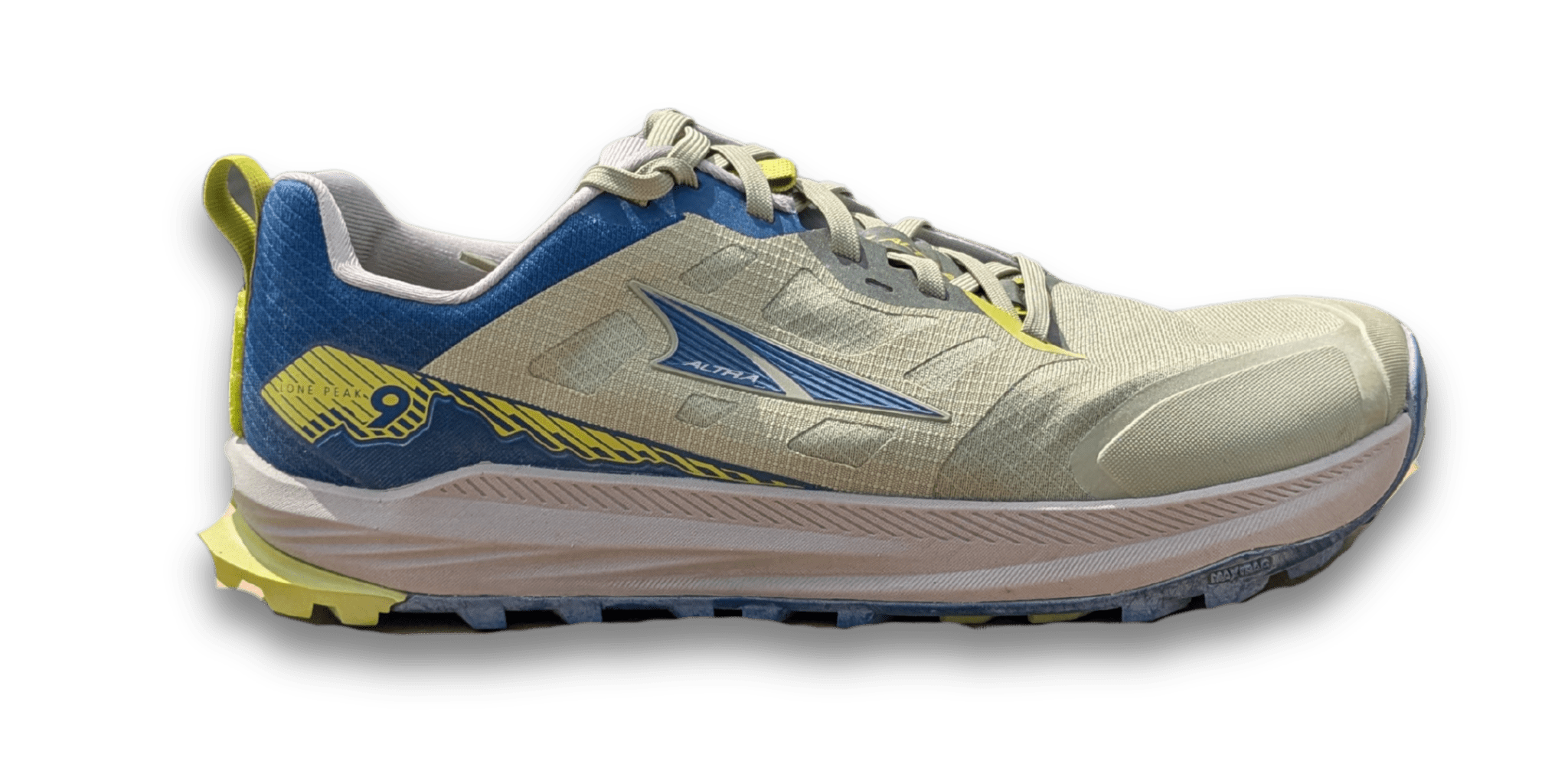
Altra Lone Peak 9
The Superior 7 keeps things low and responsive with a 21mm stack height. This is as close as you’ll get to a “barefoot” ride in Altra’s trail lineup. Ground feel remains excellent—you know exactly when you hit a pebble, root, or change in terrain. For technical trails where proprioception matters, it’s a standout feature, though some may find it insufficient for ultra distances or repeated impacts on hardpack.
The Lone Peak 9/9+ feels much higher with a 25mm stack height. Four millimeters may not sound like much, but it can be the difference between a smile and a grimace at mile 18 on the trail. The Lone Peak’s moderate cushioning takes the edge off rocky or rutted ground, but still avoids the pillowy, disconnected feel of max-cushion models like the Olympus.
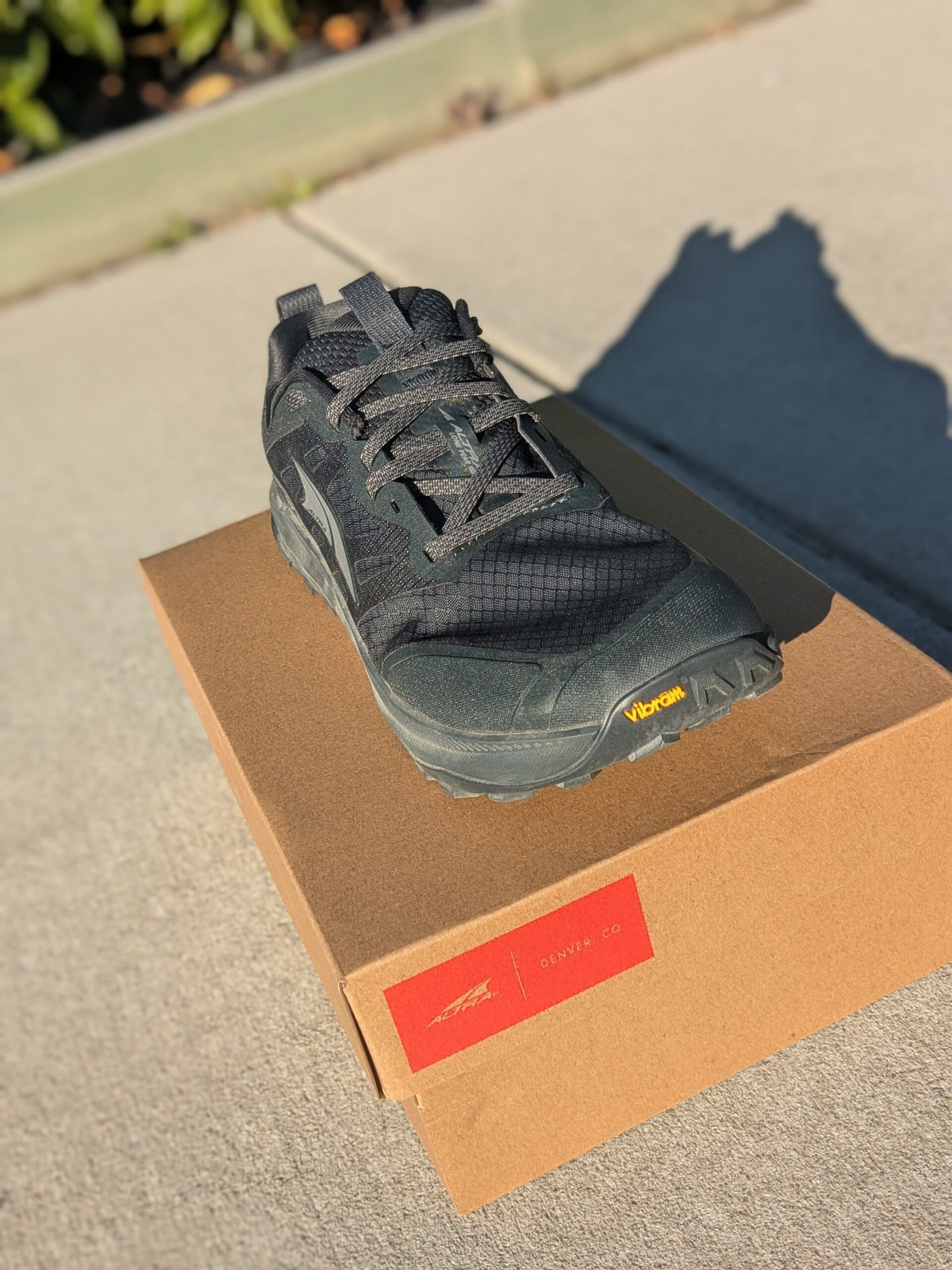
The zero-drop platform is a staple in both, but has slightly different effects. Both models are true 0mm drop. But with the Lone Peak’s extra stack, you get a touch more underfoot protection—ideal if you’re transitioning from a more traditional padded shoe, or if your trails are notoriously unforgiving.
The Superior 7 excels at nimbleness and quick transitions. If your favorite terrain is littered with switchbacks or if you like to dance between rocks, the Superior 7 delivers on agility. The shoe flexes easily—right where the foot bends—giving a natural ride. It’s also noticeably lighter, encouraging you to pick up the pace when the trail allows.
The Lone Peak 9/9+ leans into stability and easy miles. The platform is broader and flexes minimally compared to the Superior. That translates to more predictable foot placement over technical ground, though it sacrifices a bit of that tactile feel. This could be a positive for long slogs, as you tend to become sloppy as you tire.
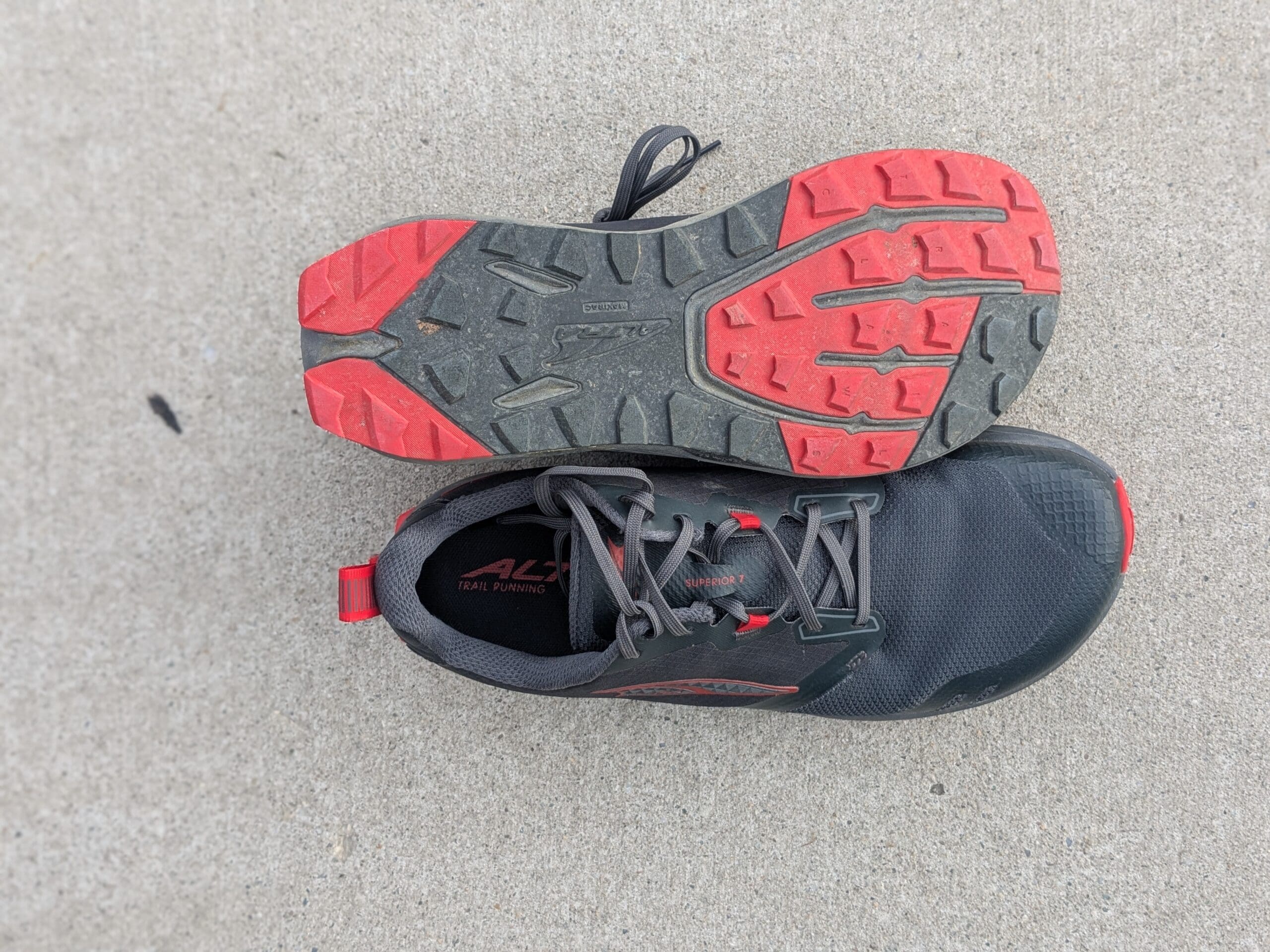
The Superior’s lack of a stone guard allows the shoe to return to its barefoot roots. I appreciate that Altra has decided to remove the stone guard from the Superior. Other options exist, such as the King MT, if underfoot protection is important. The higher stack height and stiffness in the Lone Peak translate to more rock protection, a trade-off for less ground feel.

Altra Superior 7
MaxTrac rubber gives a reliable grip to the Superior 7 and Lone Peak 9, but the lug pattern differs. The Superior 7 features semi-aggressive, evenly spaced lugs that shed mud well and bite into loose trail conditions. It’s ideal for singletrack, leaf litter, or even loose shale. On wet rock or dirt, it’s adequate, though not flawless.
The Lone Peak 9+ updates the outsole material to a Vibram outsole. While on my testing, I’ve found little difference; many trail runners prefer the Vibram outsole in wet and muddy conditions. Personally, I wouldn’t make this a deciding factor when choosing between these shoes.
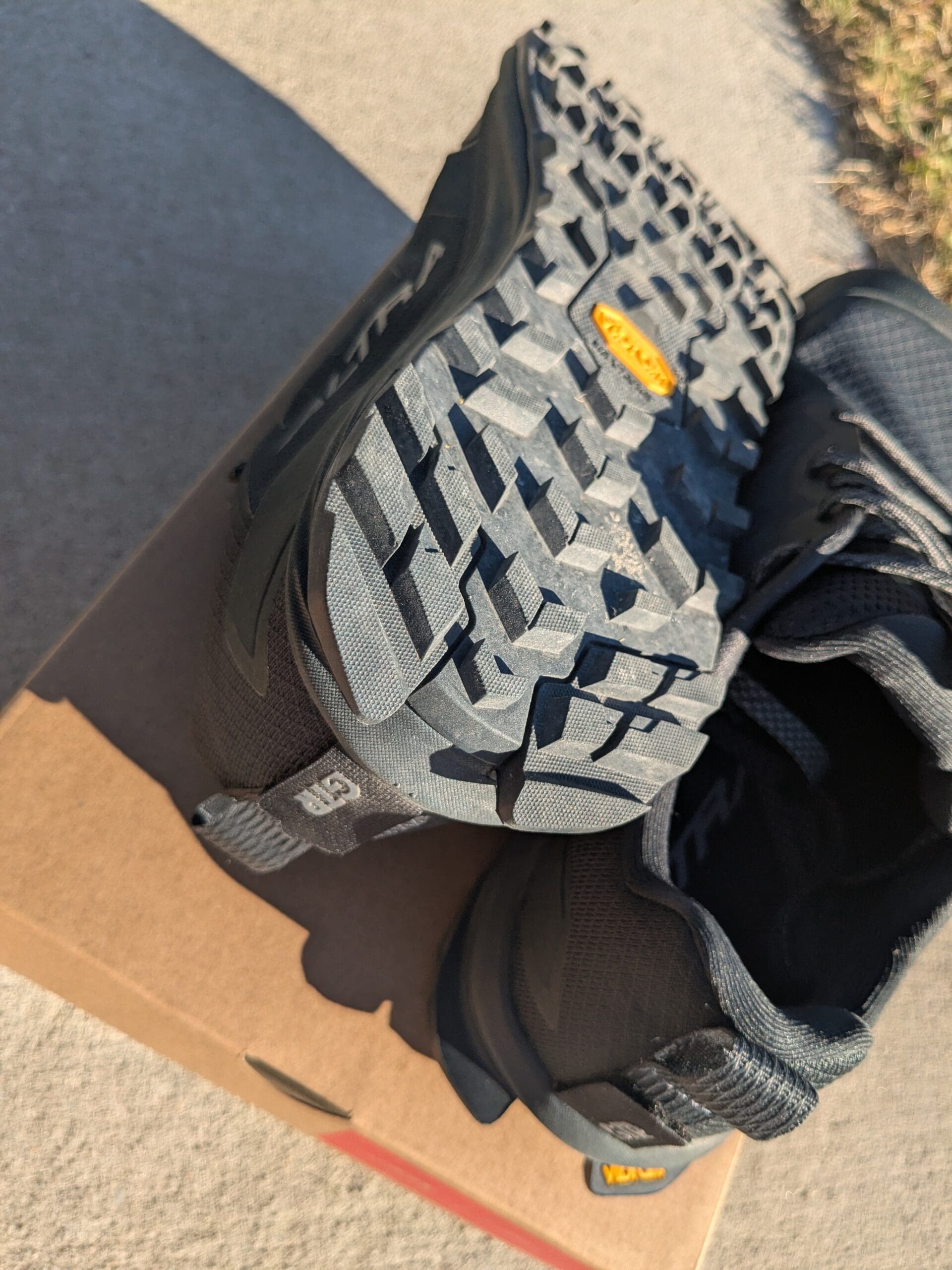
Durability edges slightly toward the Lone Peak, especially in high-mileage scenarios. This is a tried and tested design, whereas we’re moving into new territory for the Superior. So I’d give the edge to the Lone Peak in this case.
The Superior 7 is a featherweight, tipping the scales at 8.1oz (230g). This makes it one of the lightest true-trail shoes in Altra’s catalog, a huge advantage if you appreciate a nimble platform. You notice it especially on climbs or pickups; your foot turnover increases almost unconsciously.
The Lone Peak 9/9+ is heavier—about 10.6oz—but the extra weight brings comfort. That extra ounce per foot might matter for racing, but this isn’t the deciding factor for most days. The Lone Peak feels reassuring underfoot, which is valuable when fatigue sets in late in the run.
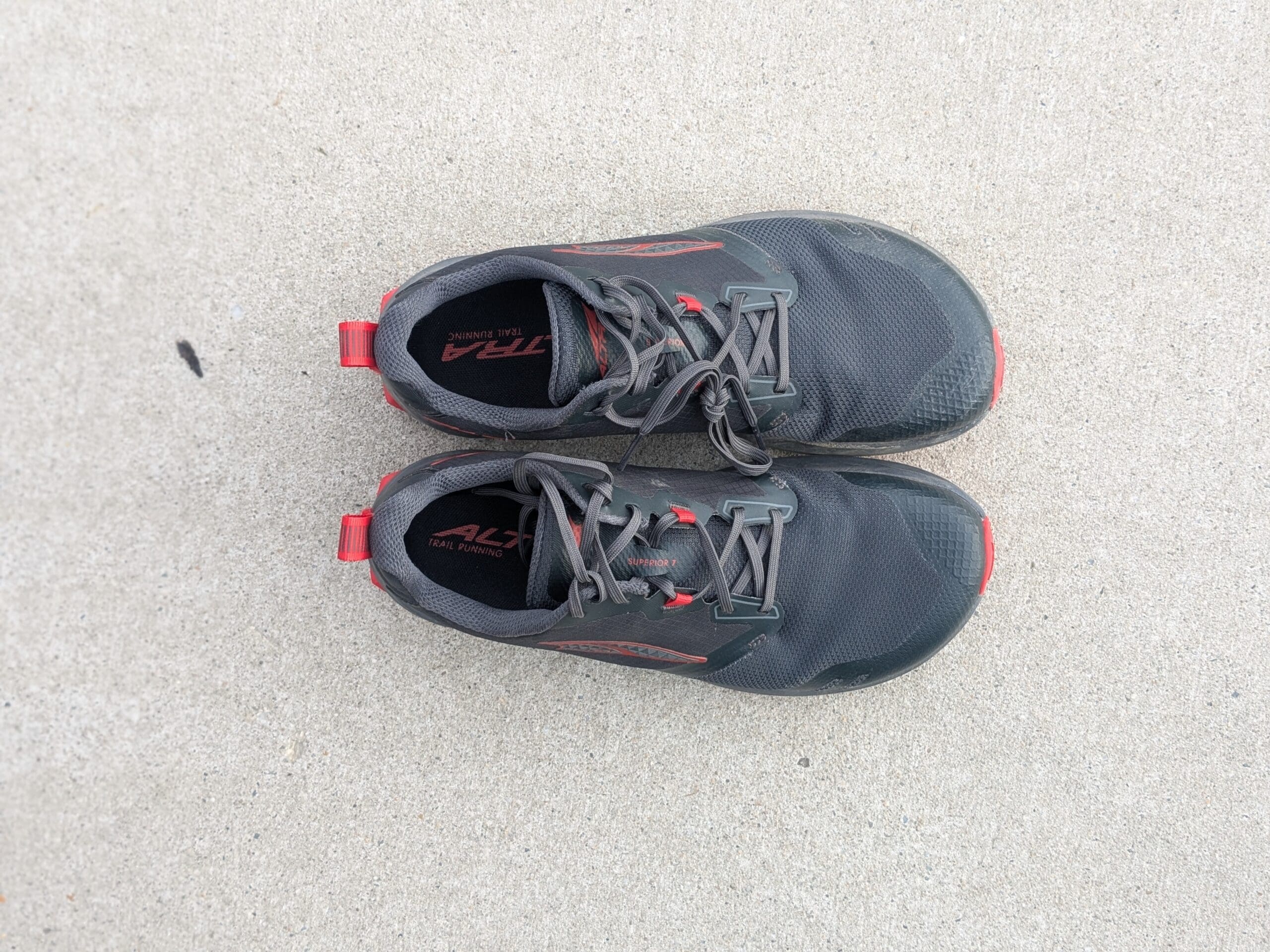
Responsiveness leans toward Superior, plushness leans toward Lone Peak. The Superior is your shoe if you want a quick rebound and a close-to-foot ride. If you’d rather trade a bit of pop for cushioning and support, the Lone Peak 9/9+ is for you.

Altra Lone Peak 9
The Superior 7 shines in dry, technical, fast-paced runs. Rocky outcrops, steep climbs, and mixed singletrack play to its strengths. It drains quickly after creek crossings, making it a top pick for wet spring conditions or humid days.
The Lone Peak 9/9+ holds up better in alpine, muddy, or all-day scenarios. It handles snow, mud, and loose shale better than the Superior, but it’s still not the shoe I’d choose for tough trail conditions. For long mountain days or backpacking where varied trail surfaces are the norm, it’s the safer all-rounder.
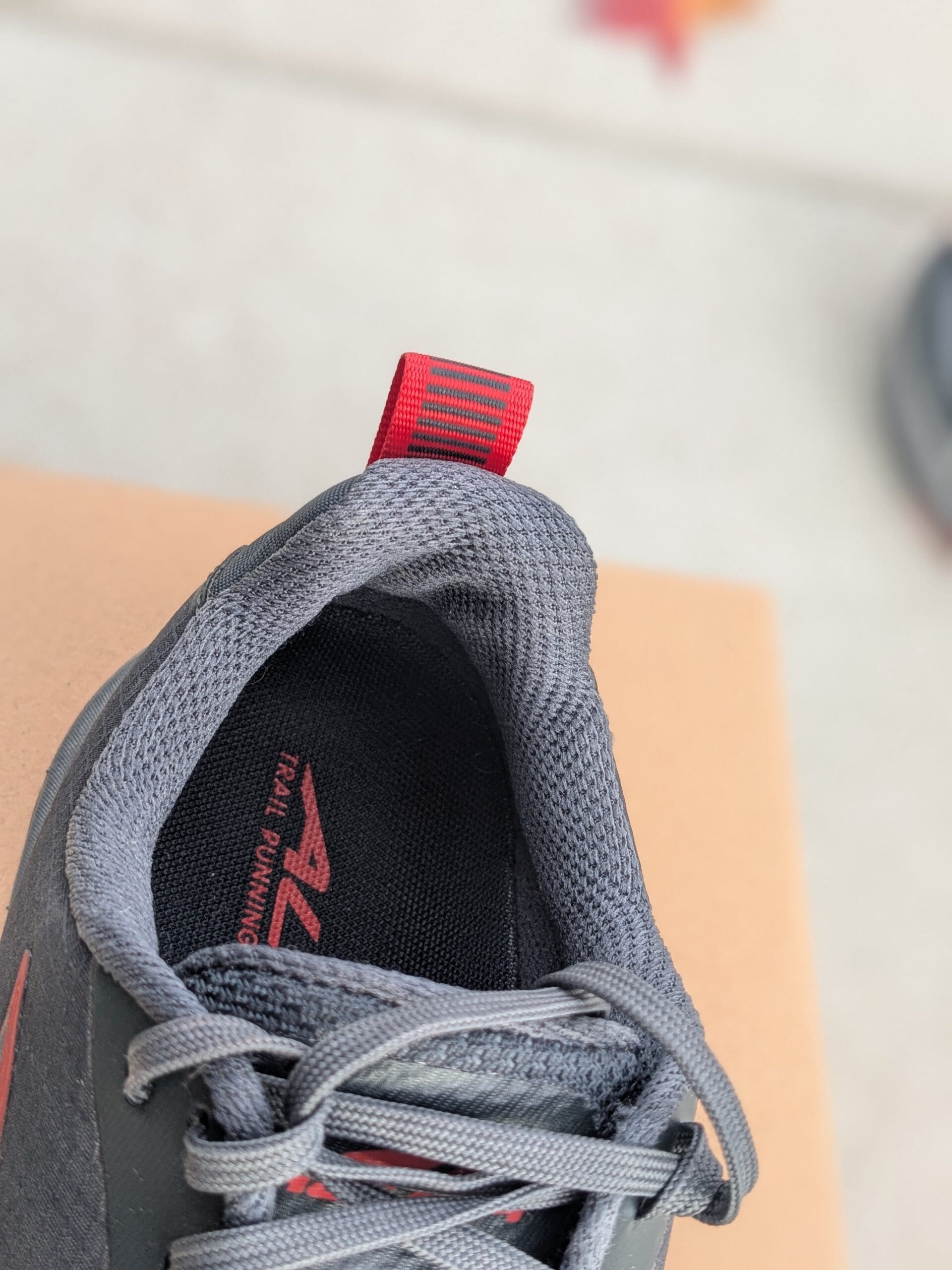
Cold-weather performance is close, but the Lone Peak holds warmth a little better. A thicker upper material will stop some heat loss, but you’ll want a thick pair of socks if this is a concern of yours.
Both shoes deliver solid life, but Lone Peak lasts longer under harsh use. I consistently see Altra midsoles compressing at 300-400km, particularly if you’re heavy-footed. The uppers can fray from brush, though they may still outlast many race-weight competitors.
The Lone Peak 9/9+ handles high mileage and abuse with more poise. After more miles, the midsole will be more durable due to the higher stack, and the outsole will show modest wear. But the area to look out for in Lone Peak is always the upper. The crease point of the forefoot is often an area of failure for Lone Peaks, and is likely true for the Superior 7, too.
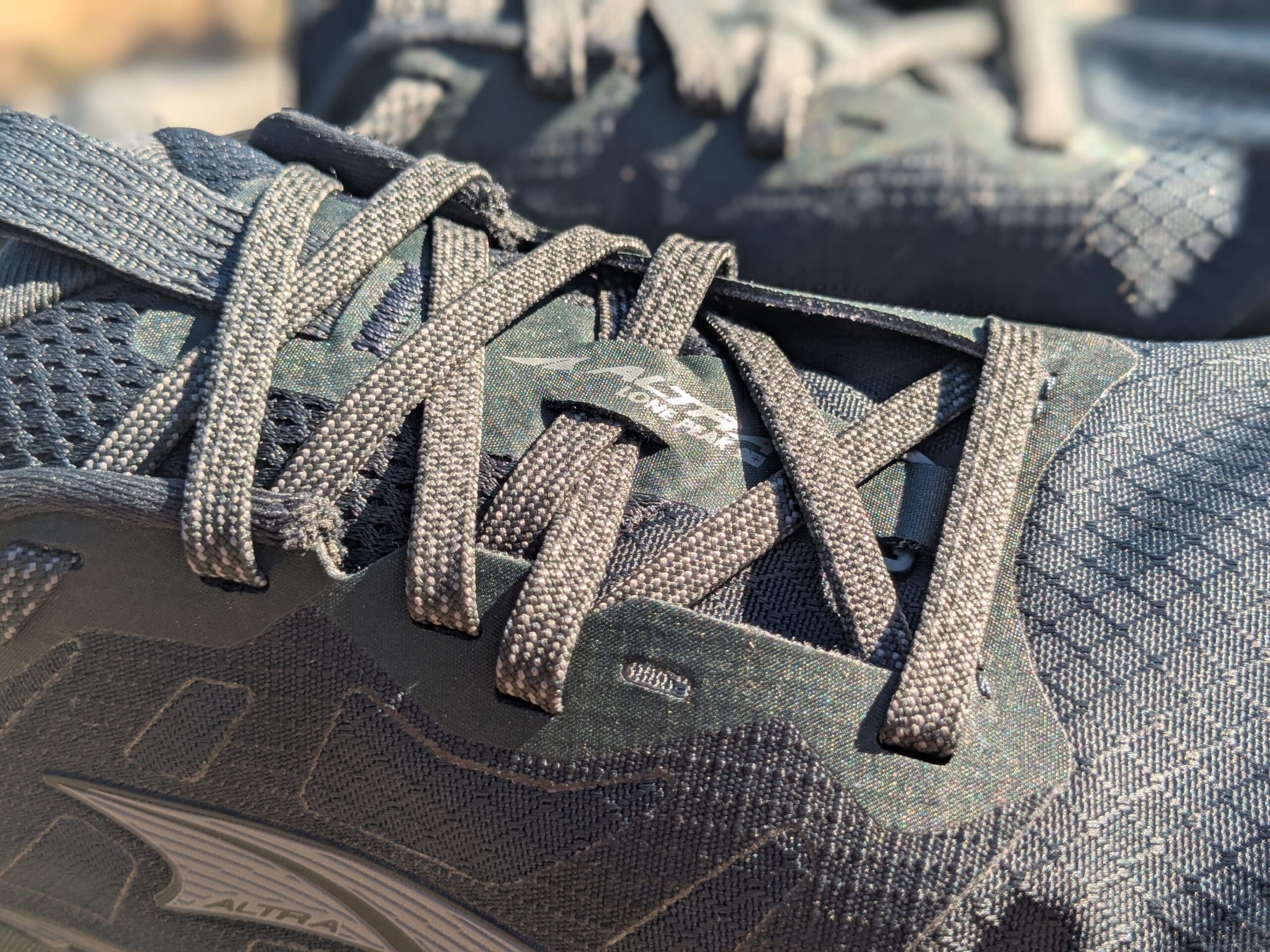
Price sits close, but the value tilts to Lone Peak for longevity, and Superior for performance. Online prices land within $10-20 of each other. If you crave out-of-the-box lightness and don’t expect to keep a pair for a year, Superior is a bargain. For the long haul, Lone Peak is likely the better option.
For technical runners focused on speed and feel, the Superior 7 is a top pick. It’s made for racing, fastpacking, or anyone who values proprioception over plushness.
For distance and variety, or those new to zero-drop trails, the Lone Peak 9/9+ is the more forgiving choice. It’s a balanced platform that excels on long missions, big backcountry days, or everyday training.
If wide feet or swelling are concerns, the Lone Peak has a wide option. This is the only trail shoe from Altra that has this option.
If you’re still on the fence, ask yourself: Do I crave ground feel and speed, or do I want comfort and versatility for the long haul? There’s no one-size-fits-all answer, but in my experience, both shoes earn their keep on the trail.
If you want my honest opinion, I’d choose the Superior any day of the week. But that’s because I value ground feel more.
Lone Peak 9/9+
Type: Trail
Width: Wide
Stack height: 25mm
Weight: 10.58 oz/ 300g
A classic Altra trail shoe with a relaxed fit for long, comfortable miles. Read the Full Lone Peak 9 Review or Read the Full Lone Peak 9+ Review
Superior 7
Type: Trail
Width: Mid Wide
Stack height: 21mm
Weight: 8.1 oz/ 230g
The Altra Trail shoe that will put you in touch with the ground. Read the Full Review
